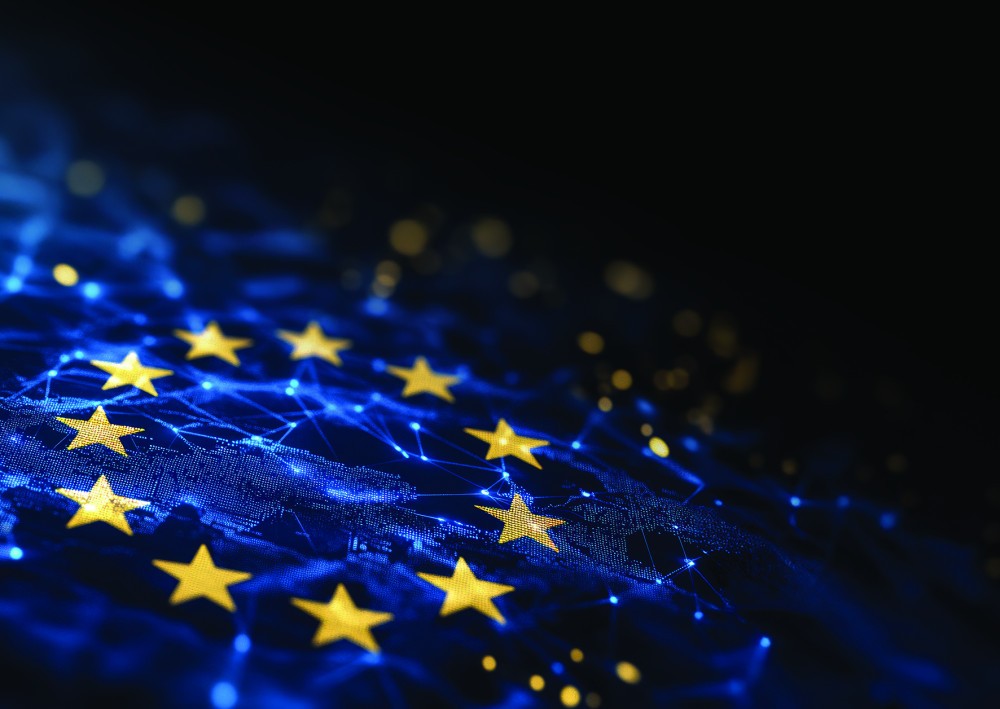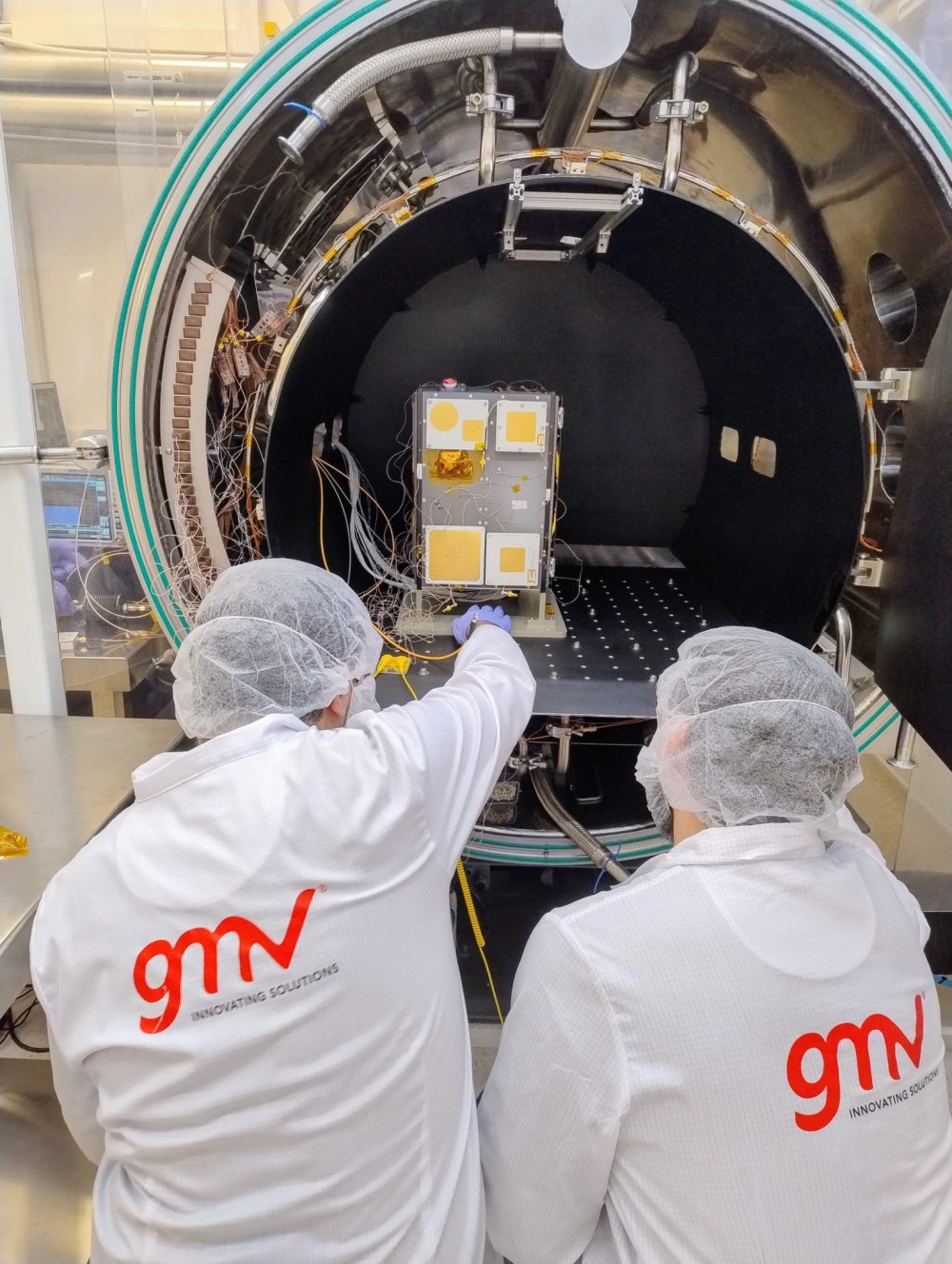Primary challenges for the development of defense capabilities in Europe

Europe is experiencing a decisive moment for its security and defense. Russia’s invasion of Ukraine, instability in the Middle East, migratory pressure, and cyberattacks on European infrastructure (such as the one that recently targeted the airport in Brussels) have made it clear that it is no longer feasible for Europe’s security to depend on vulnerable supply chains, or on capabilities that are dispersed throughout the Member States of the European Union (EU).
Previous issues of this magazine have addressed the challenges involved with developing defense capabilities in Europe from a technological perspective, but that development also requires a comprehensive approach that can encompass multiple dimensions, such as security of supply, attracting and retaining talent, industry collaborations, and protection of space as the final frontier. Each of these dimensions represents a structural challenge that could compromise Europe’s strategic autonomy if not properly addressed.
Earlier this year, the European Commission released its comprehensive Readiness Plan for the EU, which lays out the steps that must be taken to reconstruct Europe’s defenses, and it is now working on a Multiannual Financial Framework (MFF) that is consistent with that plan.
Technological sovereignty has become a fundamental strategic aspect for Europe. In a world where the balance of power now depends upon the ability to innovate, the need to rely upon non-EU countries in critical fields such as semiconductor production, cybersecurity, artificial intelligence, and satellite navigation represents a structural vulnerability. The pandemic, tensions over trade, and the war in Ukraine have demonstrated that the ability of the Member States to react will be seriously compromised unless they can maintain control over their essential value chains. A commitment to technological sovereignty does not mean shutting Europe off from the rest of the world. Instead, it means ensuring that Europe can make its own independent decisions, protect its critical infrastructure, and maintain the competitiveness of its industries. Examples such as creation of the Galileo satellite constellation in the space industry show us that the European Union is able to take the lead with cutting-edge projects, when investment is channeled in a coordinated manner with a view towards the future.
The lessons learned from the COVID-19 pandemic can also be applied to the field of defense. Lack of essential medical supplies, disruptions to logistics chains, and dependence on external countries were all demonstrations of Europe’s vulnerability. In the area of security and defense the risks are even greater, because they directly affect Europe’s sovereignty and its ability to protect its citizens. The war in Ukraine has reinforced this perspective, because war has returned to European soil for the first time in decades, and this has forced a rethinking of strategic priorities.
Although defense has traditionally been considered as a subject for the individual Member States to address, it has now become a central issue for the cohesion of the entire European project. Just a few years ago, strategic autonomy was still seen as a distant aspiration, but today it is being viewed as an urgent need.
Security of supply
Security of supply is one of the fundamental elements of any defense strategy. Without guaranteed access to raw materials, resilient logistics chains, and industries that can respond to demand within the required time frames, strategic autonomy can become seriously compromised.
In the defense field, security of supply means the ability to cover the entire life cycle: design, production, maintenance, and sustainment of the systems involved. There are three dimensions to this issue: geographical (the material must arrive at the right location), temporal (it must arrive on time), and functional (it must meet the required specifications). However, ensuring success with all of these dimensions is a complex matter, for three main reasons: firstly, because actual management of supply chains is a task that is performed at least as much (or even more so) by industry than by public administrations (and with supply chains that involve thousands of suppliers); secondly, because the risks include scheduling aspects (delays, costs, lack of skilled labor, natural disasters) as well as political aspects (blockades, deliberate restrictions, prioritization of domestic customers), and these require different responses; and thirdly, because ideas about what constitutes a crisis are not uniform, i.e., while some countries are experiencing the war in Ukraine as a structural emergency, others see it as a manageable source of pressure, and this makes it difficult to put common mechanisms into practice.
Europe is highly dependent upon critical raw materials that have to be imported, such as lithium, cobalt, nickel, and rare earth elements. These are essential for manufacturing batteries, semiconductors, sensors, radar units, and communication systems. The fact that more than 75% of these resources are coming from China as their sole supplier has turned this dependency into a direct geopolitical risk. An additional problem is concentration of the world’s entire production of explosives and gunpowder in just a few countries, which complicates large-scale manufacturing of ammunition.
The war in Ukraine has significantly changed the global geopolitical landscape. The EU’s inability to manufacture and deliver the one million artillery shells and missiles it promised to Kyiv in 2023 revealed the structural limitations of European industry. This deficiency put the ability to help a strategic partner at risk, and it also exposed a lack of preparation for a prolonged, high-intensity conflict.
The solutions for issues like these must be ambitious. One of them consists of creating strategic European reserves for critical materials, similar to strategic oil reserves. Another solution would be to use European tax mechanisms and subsidies to incentivize the relocation of industry, while also forming closer alliances with trustworthy partners like Canada, Australia, and the Latin American countries. Finally, there must be a sustained R&D effort, in order to find substitutes and other technologies that can reduce dependency on scarce materials.
Attracting and retaining talent
For the defense industry, human talent is the most strategic resource of all. This is a moderately sized industry in comparison with others, with a need for specialized labor. Without highly qualified professionals, investments in technology, services, or infrastructure will always produce limited returns. Europe is facing a perfect storm: an aging workforce, brain drain towards more attractive industries, and low numbers of women entering the STEM disciplines.
In the aerospace and defense industries, 30–35% of the workers are over 50 years old. Within a decade, this situation will result in a wave of retirements that will leave thousands of critical engineering, design, production, and maintenance positions vacant. At the same time, competition with the big tech giants is making it hard to attract young engineers, because those companies are perceived as being more innovative and more in tune with the values of sustainability and diversity.
In order to reverse this trend, a different narrative is required. Defense must present itself as an industry at the leading edge of innovation, with a clear mission to protect security and peace in Europe. Members of the younger generations, especially Generation Z, are looking for jobs that have a global impact, and an impact on society. A decisive aspect might therefore be the need to demonstrate how the field of defense contributes to maritime security, the defense of space, cyberdefense, critical infrastructure protection, and resilience against natural disasters.
Other strategies include programs to promote collaborations between industry and universities, dual vocational training, incentives for international mobility, and a commitment to cultural and gender diversity. At GMV, we understand this challenge. The average age of our employees is 36, and during the last five years we have increased our workforce by 50%, while dedicating 10% of our revenue to R&D. We also offer international careers and opportunities to work on exciting high-tech projects such as SIRTAP, Eurodrone, and Galileo PRS, among many others. This helps make our company a magnet for talented young Europeans.
Industry collaborations
Industry collaborations are an essential requirement for developing Europe’s capabilities. The current scenario of fragmentation generates redundancies and excessive costs, while also putting limits on interoperability. Although the United States has standardized its military arsenal around models such as the Abrams tank and F-35 fighter jet, Europe has 17 types of tanks and 29 models of frigates. This diversity not only increases costs, it also makes it harder to take advantage of economies of scale.
The European Commission has set up instruments such as the European Defence Fund (EDF) with the aim of promoting collaborative projects in strategic areas, and programs like the EDF have been used to fund some of the initiatives in which GMV is a participant, such as FIRES and e-Colorss for precision artillery systems, GENIUS for detecting and neutralizing explosive devices, SEACURE for submarine warfare, and EMISSARY for space surveillance. There is a double objective here: to reduce fragmentation while also strengthening strategic autonomy.
However, collaboration means more than just sharing costs. It also requires a business culture based on trust. GMV is an excellent example of this, because we have turned our ability to establish alliances into a value that sets us apart. We do not just see alliances as static contracts, but rather as living ecosystems that continue to evolve and generate shared value. This mutually beneficial perspective makes it possible for medium-sized companies to end up at the heart of major European programs.
This cooperative approach has allowed us to achieve significant milestones: collaboration with the European Defence Agency since 2004, participation in 42 EDF/EDIDP projects, and leadership on initiatives such as CONVOY, which is using artificial intelligence to detect improvised explosive devices (IEDs), and on major programs such as CELESTE, the low Earth orbit (LEO) positioning, navigation, and timing demonstration mission for the European Space Agency (ESA).
The conclusion is obvious: industry collaborations can no longer be seen as just a way to distribute the workload. We need to develop a culture of solid alliances based on trust, transparency, and joint creation of value.
Space as the final domain of confrontation
Space has become a new domain that needs protection, and it has therefore become the last frontier for cybersecurity as well. Europe depends upon satellites for navigation, observation, and communication. However, the proliferation of commercial constellations has multiplied the size of the attack surface and exposed critical vulnerabilities.
Although there are currently more than 11,700 satellites in orbit, that number is expected to grow exponentially as new private players continue to enter the field, and each of those satellites represents a potential attack vector. The risks we are now facing include jamming and spoofing of GNSS signals, cyberattacks on control centers, vulnerabilities in the software and hardware supply chains, and even kinetic and electromagnetic attacks on spacecraft in flight.
The attack against Viasat in 2022 demonstrated the potential for a space cyberattack to shut down civilian and military operations, and it highlighted the need to incorporate a robust security-by-design approach. There is also a need to establish encrypted communication channels, strict access controls, and the use of artificial intelligence to detect anomalies in real time.
The EU has responded to this situation by launching IRIS2, a secure communications constellation with end-to-end encryption, and by promoting the Galileo PRS service, which is resistant to interference and spoofing. GMV is involved in its development and is leading the development of user receivers.
What this also demonstrates is that space has become a domain that is just as important as land, sea, or air. Space is an essential part of Europe’s security, and close multinational collaboration is required in order to ensure its defense.
The EU’s Readiness Plan and initiatives to strengthen its industrial and technological bases
The document entitled White Paper for European Defence – Readiness 2030, published in March 2025, establishes that the European Union must be prepared to respond quickly and effectively to military crises, hybrid conflicts, and security emergencies. This is a plan structured around three priorities: military mobility, civilian-military preparedness, and joint capabilities.
The first priority, military mobility, requires improvement of infrastructure elements such as highways, bridges, and railroad corridors, to facilitate agile deployment of troops and equipment across all of Europe. Civilian-military preparedness requires integration of civil protection systems into defense planning, as a way of ensuring coordinated responses to natural disasters, pandemics, and large-scale cyberattacks in Europe.
Finally, the priority of developing and strengthening joint capabilities is focused on improving artillery systems, air defense, anti-drone countermeasures, C4ISR systems, and space surveillance. Implementing the EU’s Readiness Plan requires a combination of European, national, and private funding, with acknowledgment of the essential role played by the defense industry.
In line with this vision, and with the aim of reinforcing the required military capabilities, the EU has also launched some complementary initiatives designed to strengthen the industrial and technological bases for European defense. Some highlights of these include EDIRPA, ASAP, EDIS, EDIP, and SAFE — all mechanisms to foster coordinated procurement, increase ammunition production, and finance investment in critical capabilities. Together with the EDF, these tools are creating the Readiness 2030 operational ecosystem, aligning policy, industry, and funding toward greater strategic autonomy.
Multiannual Financial Framework
The Multiannual Financial Framework (MFF) 2028–2034 represents another ambitious plan. With a total budget of €1.98 trillion, and €131 billion dedicated to defense and space, investment in these areas will be five times higher than during the previous cycle.
As part of this financial framework, the €450 billion European Competitiveness Fund will be used to support research, innovation, and deployment of disruptive technologies. In parallel, the Global Europe instrument will dedicate €200 billion to international cooperation and global stability, while flexibility mechanisms will provide reserve funds, lines of credit, and the funding needed to respond to unexpected crises.
Governance is a key aspect. The EU must ensure transparency, democratic control, and a results-focused orientation, so that every euro invested translates into tangible capabilities, avoiding redundancies and bureaucracy. If this can be achieved, the MFF will transform European defense.
Europe is now at a decisive crossroads in defense and security. The challenges affecting capability development — security of supply, talent, industry collaboration, integration of space, preparedness, and sustainable funding — must be addressed comprehensively. Strategic autonomy means not isolation, but the ability to act independently in cooperation with allies. Companies like GMV are demonstrating that, with a culture of innovation and alliances, Europe can be at the center of technological and security leadership.


